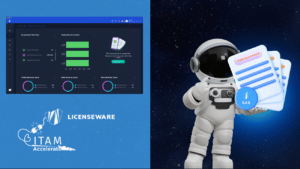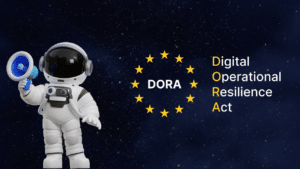Retrospective on Anaconda’s 2024 Licensing Changes: What They Mean and Smarter Alternatives

In 2024, Anaconda quietly introduced new licensing changes that took many in the software and data science world by surprise. These changes, which may significantly impact research institutions, government agencies, startups, and enterprises alike, represent a broader trend: the increasing commercialization of open-source tooling ecosystems.
For organizations navigating the complexities of software compliance, especially in environments heavily reliant on Python-based data science workflows, this change is more than just a policy tweak, it’s a wake-up call. And for the SAM (Software Asset Management) world, it’s yet another example of why reactive tooling and spreadsheets are no longer enough.
What Changed in Anaconda’s License (and Why It Matters)
Starting in March 2024, Anaconda, Inc. updated its Terms of Service to introduce a new Commercial Edition License. Under this license, any organization with 200 or more employees—whether private, public, governmental, or even non-profit, is now required to purchase a commercial license to legally use Anaconda’s software.
This change affects not just direct usage of the Anaconda Distribution, but also indirect usage via automation, Docker containers, cloud notebooks (like JupyterHub), and any integrations involving Anaconda’s binaries or packages.
Here’s the critical breakdown:
- Who needs a commercial license? Any entity with 200+ employees using Anaconda in any capacity (dev, research, production).
- Who is exempt? Educational institutions using Anaconda strictly for teaching curriculum (not research), and individuals using it for non-commercial personal projects.
- What’s affected? The entire Anaconda Distribution, including core Python tools, data science libraries like Pandas, Numpy, Scikit-learn, and Conda environment management.
- What’s not affected? Projects using open-source alternatives that don’t rely on binaries distributed directly by Anaconda, Inc.
The Real-World Impact: Who Should Be Paying Attention?
This licensing change has a wide reach. Here’s where it hits hardest:
- Enterprise Data Science Teams using Anaconda to manage environments across hundreds of VMs or containers.
- Government and NGO Projects with limited budgets but institutional scale.
- Universities & Research Labs—many of which assumed they were covered under the “educational” umbrella but now fall under commercial use when conducting grant-funded or independent research.
- Startups running AI/ML pipelines on Anaconda-based Docker containers.
Even CI/CD pipelines and ephemeral compute jobs pulling Anaconda packages now fall into a grey area if they touch production or research-grade infrastructure.
Strategic Implications for SAM and Compliance
From a Software Asset Management standpoint, this shift adds another high-risk surface area that can be easily overlooked:
- Package Managers Are Not Exempt: Just because it’s open source or pip-installable doesn’t mean it’s free to use in commercial settings.
- Shadow Usage: Data scientists and devs may use Anaconda unknowingly in Jupyter, VSCode, or Docker images.
- Audits Can Happen: While Anaconda isn’t Adobe or Oracle, nothing prevents them from tracking download fingerprints or partnering with enforcement vendors.
Licenseware clients, especially those in hybrid enterprise environments, need to factor in:
- How many developers or data scientists are using Anaconda-based tools?
- Are container images or CI/CD jobs embedding Anaconda binaries?
- Are there published environment.yml files specifying anaconda as the base?
Viable Open-Source Alternatives to Anaconda
Fortunately, there are robust alternatives that offer similar functionality without the commercial entanglement. Here’s what to consider:
1. Miniforge / Mambaforge
- What it is: A lightweight Conda installer with packages pulled from the open conda-forge community, not Anaconda’s repos.
- Bonus: Mamba is a drop-in replacement for Conda, with parallel dependency resolution that is way faster.
- Use case: Production-ready data pipelines or personal projects that need a performance edge.
2. Micromamba
- What it is: A fully C++-based lightweight version of Mamba. Super portable and ideal for containers or ephemeral jobs.
- Use case: CI/CD jobs, minimal containers, or portable tooling.
3. Pyenv + pip + venv
- What it is: A classic combo for managing multiple Python versions and isolated environments.
- Use case: Great for backend development, web apps, and traditional Python workflows without the need for heavy ML tooling.
4. Poetry
- What it is: A powerful dependency and packaging manager focused on reproducible builds.
- Use case: Ideal for modern Python applications, including those published to PyPI.
5. Pipenv
- What it is: A user-friendly tool combining pip + virtualenv + Pipfile.lock tracking.
- Use case: Beginners or teams that want better dependency hygiene but aren’t doing heavy data science.
What SAM Pros Should Do Now
For companies using Licenseware or any modern SAM tooling, here’s how to operationalize this change:
- Inventory Your Data Science Stack Start with an automated discovery scan—identify packages, container images, and CI jobs that pull from Anaconda channels.
- Assess Your Risk If you’re over the 200-employee threshold and using Anaconda packages in production, assume you’re non-compliant unless you have a license.
- Engage Legal & Procurement Loop in stakeholders early. Don’t wait for an audit letter. Document fallback alternatives and cost scenarios.
- Switch to Open Channels Encourage your teams to migrate to conda-forge via Miniforge or Mamba. Update Dockerfiles, Conda environment specs, and deployment scripts accordingly.
- Use Licenseware to Automate License Risk Mapping Our platform can map package dependencies across your IT estate and flag licensing risks—saving time, money, and potential audit pain.
Final Thoughts
Anaconda’s licensing shift reflects a broader trend: open source is not synonymous with “free for commercial use.” As vendors monetize more aggressively, companies need visibility, policy enforcement, and automation in their software stack.
Licenseware exists to simplify that complexity. Whether it’s a 200-seat Python team, a Kubernetes ML cluster, or an internal research lab, our modular tools help you manage licenses proactively, so you’re not blindsided by new terms and sudden cost centers.
In a world of “accept, finish, next,” it pays to pause and read the license. Or better yet, let Licenseware read it for you.










